
Sergers and sewing machines are both popular tools in the sewing world and can sometimes be confused. However, there is a distinct difference between the two.
Sergers are a type of sewing machine that is designed to finish seams and hems all at the same time. Sewing machines are designed to make multiple types of stitches and are more versatile machines.
The rest of this article will go over the key differences between the machines, the pros, and cons of each, as well as when to use each.
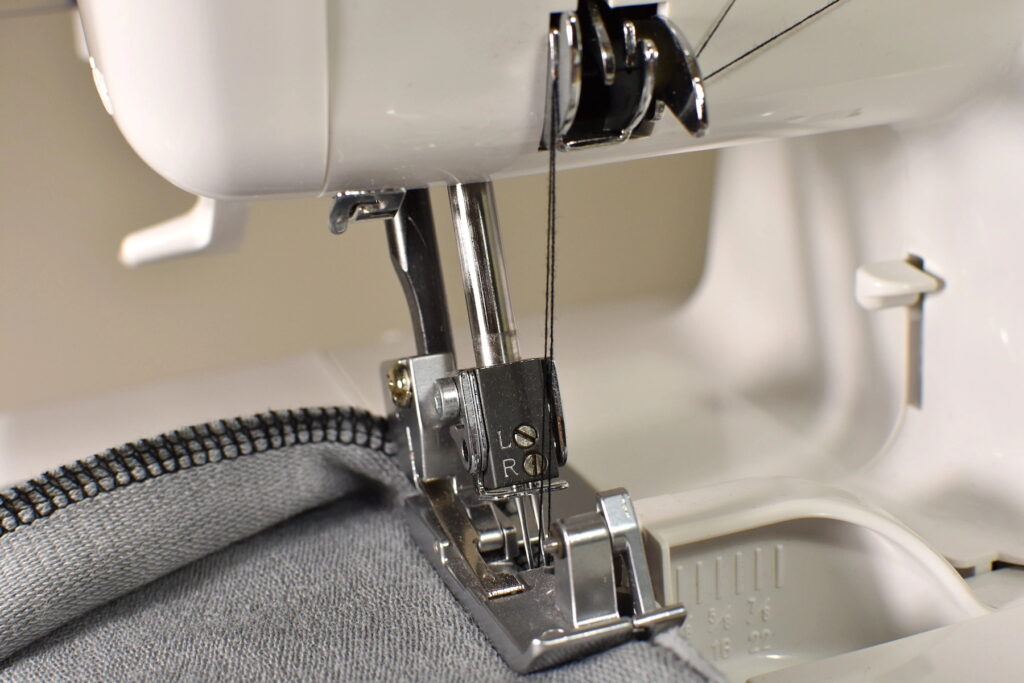
Although sergers and sewing machines may appear very similar, they are unique products that cannot be substituted for one another.
A serger is a type of sewing machine that is designed to finish seams and fabric edges. It does this by using an overlock stitch, one that sewing machines are not designed to sew.
A serger looks almost exactly like a sewing machine, but instead of possessing the versatility of a sewing machine, it is designed especially for completing one type of project, hemming. A serger can sew seams using an overlock stitch, trim seam allowances, and finish raw edges.
This makes sergers an excellent product for the sewer who wants their work to appear professional and doesn’t want to waste time sewing the seams by hand or doing it with a sewing machine.
When researching sergers, you may also see a different name popping up, the overlock sewing machine. This is because they are almost the same machine.
The only real difference between the two is that when comparing the serger vs. the overlock sewing machine, overlock sewing machines use fewer spools of thread. Outside of that, both devices perform the same function.
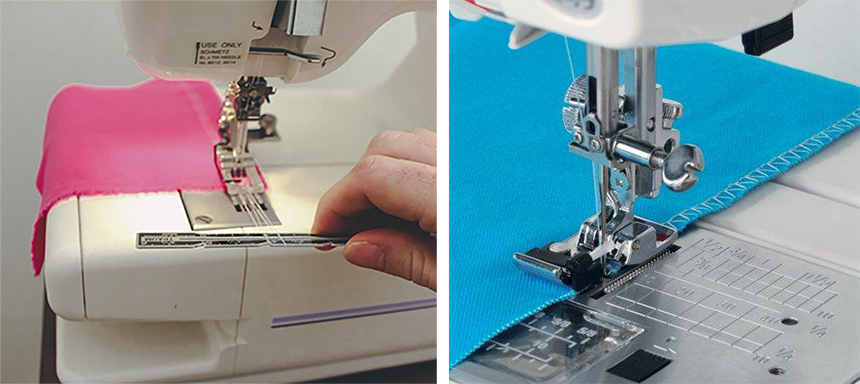
Another common comparison that you may find is the coverstitch sewing machine vs. the serger. Like the overlock sewing machine and the serger, they are similar but still have differences.
Coverstitch sewing machines are primarily used for knit materials. Like the serger, the coverstitch sewing machine is designed for hemming and sewing seams.
However, the stitch that is used to create the seams is different. For example, a coverstitch sewing machine makes two or sometimes three lines of parallel stitches that hold the hem together. In contrast, a serger uses the overlock stick, which creates an overcast that helps keep the seam together more securely and neatly.
The biggest difference you can see when comparing a sewing machine vs. a serger vs. a coverstitch is the number of threads they use.
The average sewing machine only uses one thread at a time. This allows it to create more intricate stitchwork necessary for more delicate projects.
Coverstitches usually use two threads that they stitch in two parallel lines to finish seams and hems.
Out of all three machines, sergers use the most threads. Most serger machines use at least three threads at once, and some higher-quality machines use up to five threads simultaneously.
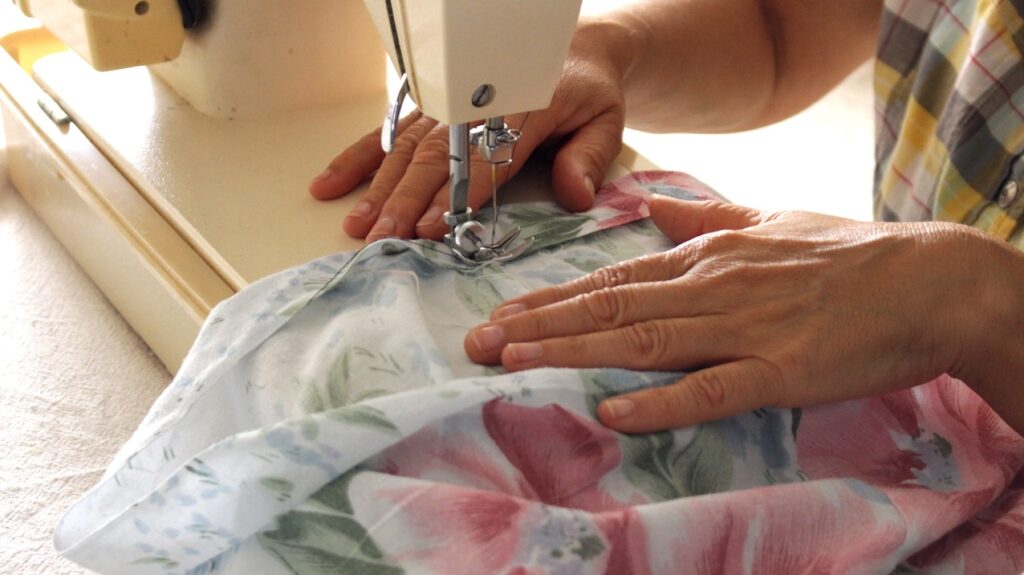
A sewing machine is used to stitch pieces of fabric together and can use several different stitches.
A sewing machine is one of the most versatile machines a sewer can have because it can do many things if you know how to use it properly. Normally, they can do several different types of stitches, including straight, zigzag, and decorative stitches.
Overall, sergers and sewing machines have very similar designs and look similar from an outside perspective. However, there are differences between a serger and a sewing machine.
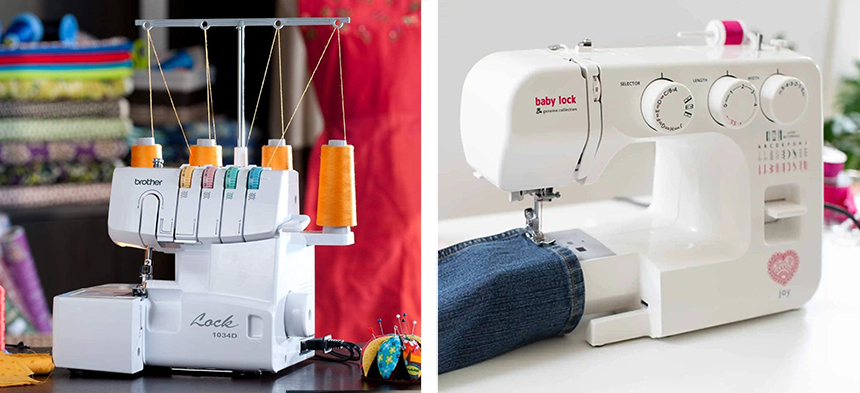
The first design difference is visible even to those unfamiliar with sewing machines. Sergers are typically heavier, more rigid machines. This is because they are not designed to perform a variety of tasks. Instead, they are only meant to sew seams and finish hems and fabric edges.
In contrast, sewing machines have a far more delicate appearance. This is because they have a longer neck and more space between all components. This is because a sewing machine is designed to perform various tasks, and the additional space and flexibility allow it to be more versatile.
The number of threads used is also a big difference between a serger and a sewing machine.
Most sewing machines are designed to be used with only one thread.
The single thread allows the sewing machine to produce a variety of stitches and complete various projects Trusted Source SEWING FOR BEGINNERS This manual is an introduction to sewing. It is designed to give you information quickly and easily. The drawings and descriptions will help you understand the most important steps and ideas. extension.unh.edu . However, it also prevents the machine from creating stitches like the overlock stick necessary for professional-looking fabric edges.
In contrast, a serger uses several spools of thread simultaneously. This allows them to create the stitches necessary for professional hems and seams, enabling them to work quickly.
The number of threads a serger will use varies based on the machine’s price point. A more affordable serger will only use two to three spools of thread at once, while a professional quality machine may use five or more.
Sergers also require a specific type of thread that is not typically used in regular sewing machines.
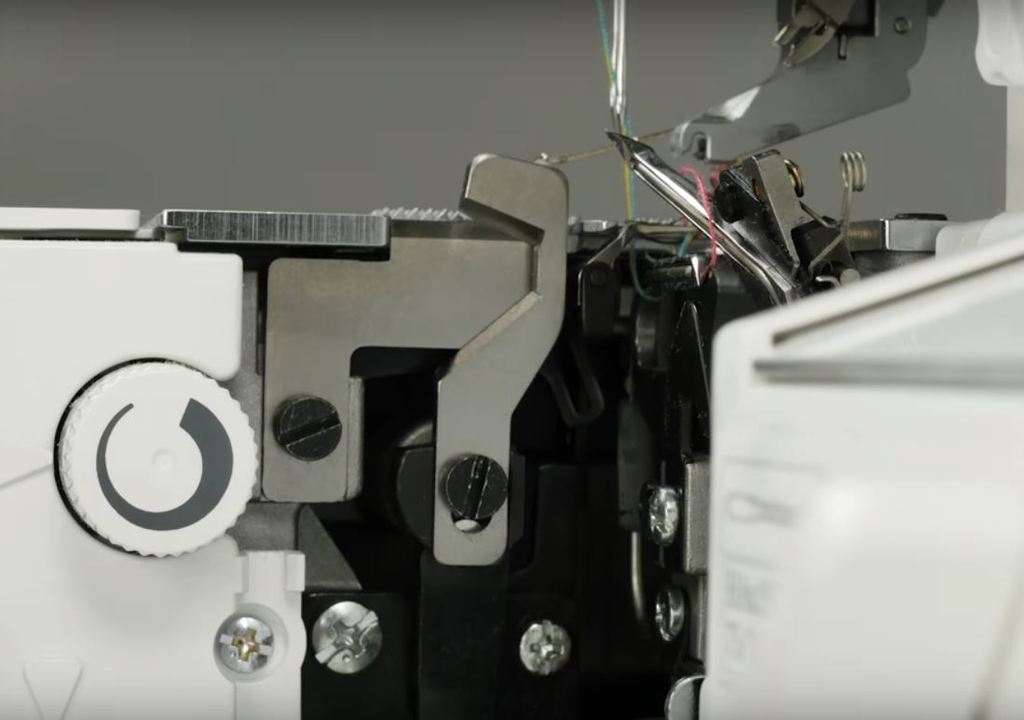
A key difference between a sewing machine and a serger is that a serger sewing machine can finish seams and hems. One of the reasons that they can do this is because sergers are designed with something called a cutting knife.
The cutting knife is designed to cut off excess fabric from seams while the serger sews them together. This allows for a clean, professional-looking seam while reducing the labor you have to put into the project.
If you use a sewing machine to sew your seams, you will have to remove the excess fabric by hand. While this is possible, it can be difficult and will also significantly increase the amount of time that you are spending on your sewing project. The time that you could use to enhance another aspect of your creation.
Another difference you can see when you’re looking at a serger machine vs. a sewing machine is the number of stitches they can do.
A serger can typically only create one stitch, the overlock stitch. This stitch is ideal for finishing seams and hems so that the seams lay smoothly and look professional. They also make for more robust seams as multiple threads are used to stitch them.
In contrast, sewing machines can stitch various stitches. The exact amount will vary based on the quality of the sewing machine, with some of the newer, computerized machines being programmed to stitch hundreds. However, virtually all sewing machines can stitch at least two, the straight and the zigzag stitch.
Another important factor to consider is how easy the machine is to thread. After all, if you can’t thread the machine, you won’t be able to use it.
Of the two machines, sewing machines are considered easier to thread for one simple reason: the number of threads. Most sewing machines only sew with one thread at a time, occasionally two.
Sergers can be quite a bit more difficult to thread. Since they often work with up to five threads, you need to know how to get five different threads where they need to go. Unfortunately, this also increases the potential for the threads to get tangled up and jam the machine.
For a beginning sewer, this could be difficult, and they will need to spend quite a bit of time practicing to get it right. That’s why, if you decide to go with a serger, purchasing a self-threading serger could be a great idea.
When comparing a serger vs. a regular sewing machine, another clear difference between the two can be seen in the speed. On average, sergers can stitch much faster than sewing machines.
This is mainly because sergers only have one purpose, so they can perform that task very efficiently.
On average, sergers can stitch between 1,300 and 2,200 stitches per minute. In contrast, the fastest sewing machines will only reach about 1,500 stitches per minute.
The learning curve when learning how to use a serger vs. a sewing machine will depend on your prior experience.
If you’re already familiar with how to use a sewing machine, you likely won’t find it hard to learn. After all, a serger is a type of sewing machine, and most functions are similar.
The one difficult aspect may be adjusting from the sewing machine’s relative flexibility to the serger’s rigidity. In addition, threading multiple threads may also prove to be a challenge.
If you are learning how to use both at the same time and have no prior experience with sewing machines, then you’ll likely find the serger easier to use.
Since a serger sewing machine only has one function, there’s only one thing to learn when it comes to using the machine. On the other hand, a regular sewing machine can perform many different stitches that will take longer to learn if you’re starting from ground zero.
Every machine has its pros and cons, and each will be ideal for a different sewer. To make your decision on which machine to purchase, it’s essential to know the positives and negatives of each machine that way.
The four main pros of a serger are:
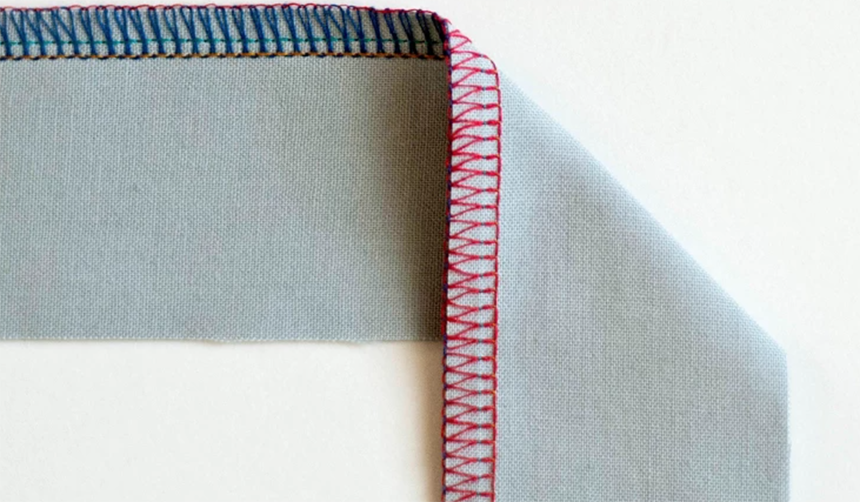
Using a serger, you can produce professional-quality seams and hems without laboring away for hours at your sewing machine. The serger does it all for you. All you have to do is feed the fabric in and let the machine do its work. A serger sewing machine can also finish the edges of the fabric.
Having a serger will also save you quite a bit of time. Even the fastest sewing machines barely reach the speed of the slowest sergers. Serger sewing machines can stitch thousands of individual stitches per minute, which will greatly speed up your sewing process.
The third positive to using a serger is the consistency that they produce. When you’re using a sewing machine, the quality of the results depends on your ability to use the machine, feed the fabric through at the correct speed, maintain tension, etc. Since the serger does most of this for you, the consistency in quality is much higher.
The last pro to a serger is the built-in cutting knife. The cutting knife is built into the machine and cuts the excess fabric off the seams as the machine sews. This is another feature of the serger that will save you hours of time when completing your projects.
If you were to sew your seams with a sewing machine, you would have to cut off the excess fabric yourself as you sew the seams. Using the serger produces more consistent-looking seams and saves you from wasting time trimming the fabric.
The three main cons of a serger sewing machine are:
The first disadvantage to serger sewing machines is their lack of versatility. The serger is only meant to do one thing, sew seams and finish fabric edges.
If you only have the money to invest in one machine and decide to invest in the serger, then you will be severely limited in the projects you can do. In addition, if the projects require multiple types of stitches or something fancier, you won’t be able to do it with a serger sewing machine.
If the serger is the only machine you have, you’ll be left having to complete all of the more complex stitches by hand.
This lack of versatility is a big reason many sewers prefer to stick with a sewing machine instead of a serger, especially if their budget limits them to one machine.
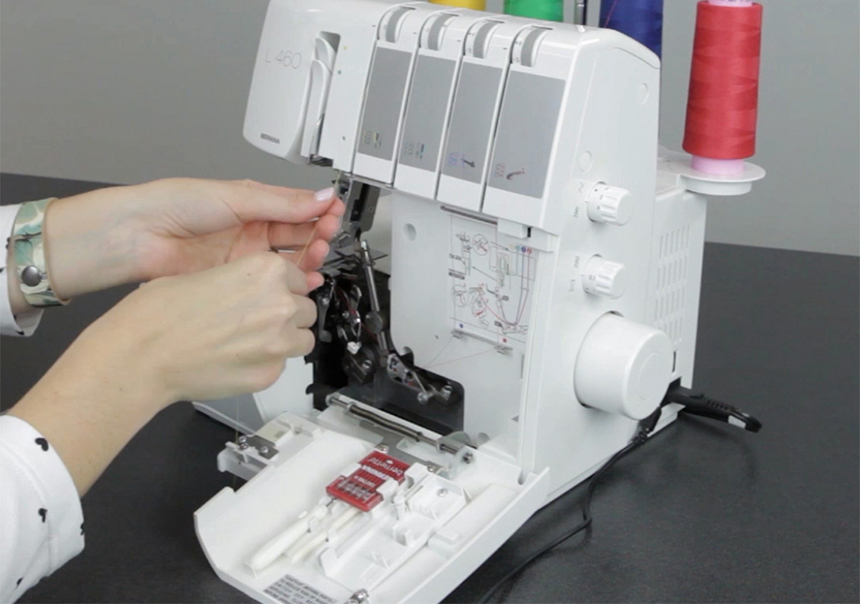
Threading a sewing machine is many sewers’ bane of their existence. After all, who wants to spend hours trying to thread an uncooperative thread through a tiny hole only for it to get tangled up on the other side?
Nowadays, many sewing machines will automatically thread themselves. However, this technology has yet to reach most serger sewing machines.
Serger sewing machines also use a lot more threads than regular sewing machines. Most sergers will use three to four threads at the same time. This also means that to use one, you have to know how to thread the machine without tangling all of the threads up.
If you’re unsure how to use a serger, finding a serger specially made for beginners will be necessary. These will be easier to thread and, overall, easier to use.
Just like with the serger machine, there are many pros and cons to using a sewing machine, and it’s important to know them so you can make a more informed purchase.
Three main pros of using a sewing machine are:
One of the best things about purchasing a sewing machine is that you can use one on an infinite array of projects. You can use a sewing machine to sew everything from tablecloths to formal dresses to pillow covers.
The flexibility of the machine and the added space between the neck and the space allow you to move the fabric around freely enough to create various items. You cannot do this on a serger due to the limited space.
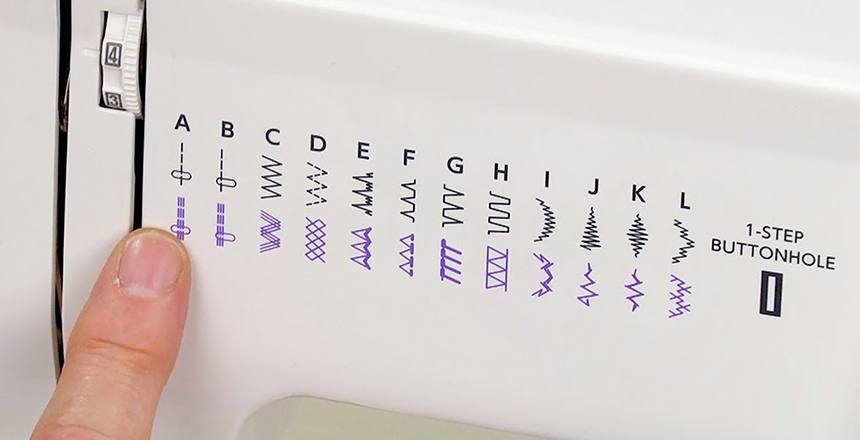
Another advantage to using a sewing machine instead of a serger is that you can stitch many different stitches.
Even the most basic of modern sewing machines typically have at least a dozen different stitches programmed into the machine. This makes it so that you can work on many different projects and fabrics without worrying that your sewing machine cannot stitch into that fabric.
Sewing machines usually also feature decorative stitches, which is something that no serger sewing machine is capable of doing. You can include the stitching as part of the art instead of doing your best to conceal it.
Compared to a serger, a sewing machine is easier to thread. Many modern sewing machines have now been designed to be self-threading, making the process even easier. You just introduce the thread to the machine, and it pulls it the rest of the way through.
Sewing machines also only feature one, maximum two, threads, so even if you must do it by hand, the threading process is simpler. You do not have to worry about tangling up multiple threads while passing them through the sewing machine.
The primary cons to using a sewing machine are:
When you use a sewing machine, you are able to control many more factors. You can control the tension, the angle, as well as the speed. However, with this added control come to some limitations. One of which is maximum speed.
Since you control how quickly the fabric is moving through the machine and you have to maintain the tension, sewing machines cannot stitch as quickly as you can with a serger.
The fastest sewing machines only manage to reach approximately 1,500 stitches per minute. While this is still fast, it’s not near as fast as most sergers, which can complete thousands of stitches per minute with consistent quality.
Another downside to using a sewing machine is that the quality of the stitches is far more variable. Since the person using the machine controls more aspects of the process, there is more room for human error.
This human error can lead to inconsistencies in the stitch length, fabric tension, and angle of the stitches, amongst other things.
With a serger, you do not deal with the same problem since the machine is the one in control of the majority of these factors.
Comparing sergers vs. sewing machines, we see that sewing machines have limited seaming and hemming abilities. Yes, it’s possible to sew seams and hem the raw edges of fabrics with a sewing machine. However, it will take a lot longer, and you’ll produce varied results.
Sewing machines are also incapable of producing the overlock stitch, considered one of the best for sewing smooth, straight seams.
The last downside to using a sewing machine instead of a serger machine is that sewing machines do not come with cutting knives.
The cutting knife is a sharp blade attached to the serger and trims off the excess fabric as the serger sews the seams.
Since sewing machines do not have this feature, you will have to trim the excess fabric by hand. This will add many hours to your project, and you will also not have as neat of seams this way.
The cutting knife ensures that the seams are trimmed to the same length for the entire length of the fabric. Something that can be difficult to replicate when doing it by hand.
Before purchasing a serger or a sewing machine, it is essential to know when to use a serger vs. a sewing machine. If you don’t know this, you risk wasting money by purchasing the wrong machine for your individual needs.
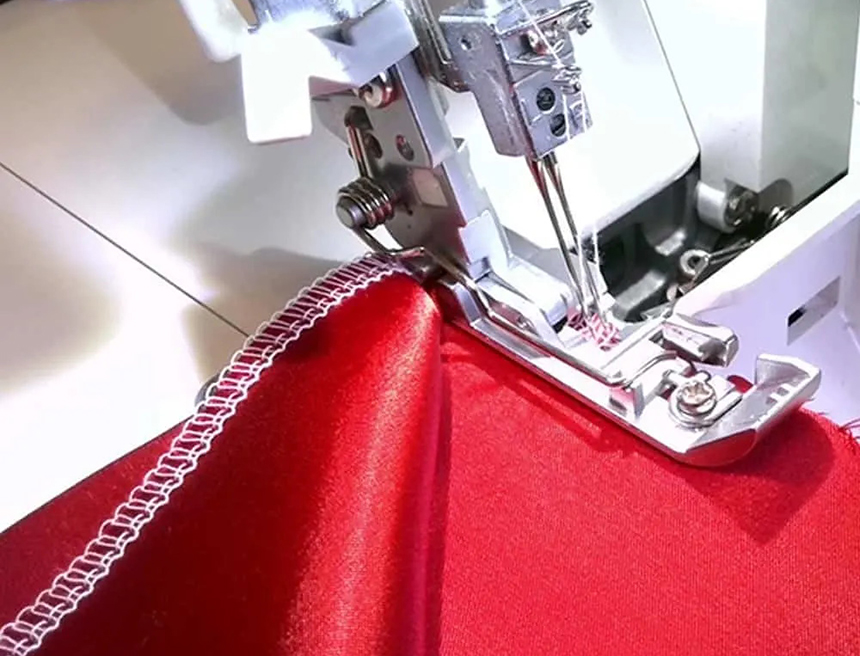
A serger is best used for projects that require a lot of seaming and hemming work to be done. Sergers are specifically designed to rapidly finish seams, trim the edges, pull the fabric together, and stitch it all in one go.
Sergers are especially important if you are working on a project where the seams will be visible. When you sew seams with a sewing machine or by hand, you guarantee that there will be some level of variability in the stitches. After all, human error creates inconsistencies.
If you know that the seams will be visible and want them to be as uniform as possible, it is best to use a serger. Since most human error is removed from the situation, you will be left with neat, professional-quality seams that will enhance your project, not take away from it.
It is best to avoid using a serger if you are working on a project that will require you to move the fabric around a lot.
Since the space between the neck and the base of a serger is limited, there is not enough space to make the small adjustments necessary for more intricate stitching.
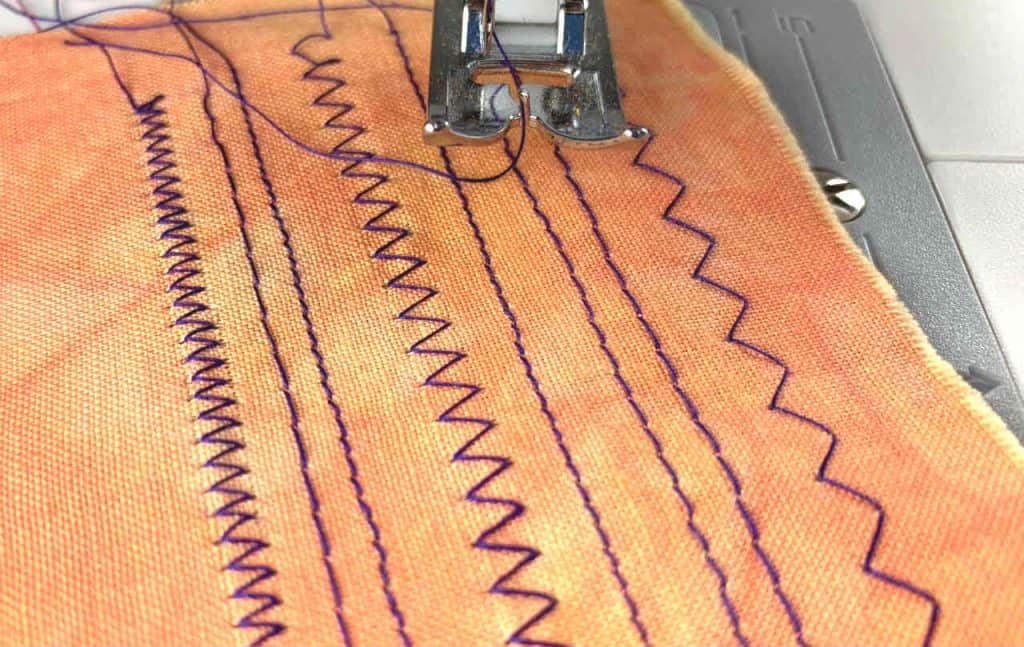
A sewing machine is best used for projects involving moving the fabric around a lot or in which you want to use different stitches.
Most modern sewing machines come programmed with several, and sometimes several dozen, stitches. This makes it easier to complete complex projects needing multiple types of stitches.
Sewing machines can also do decorative stitches, which is ideal if you would like to include some embroidery-like details on your finished product.
You should avoid using a sewing machine in projects where you know your seams will be on display. Sewing seams with a sewing machine increases the possibility that your seams are uneven and inconsistent.
Regular sewing machines also do not make as strong seams as a serger sewing machine. In addition, since sewing machines only use one thread, their seams and hems will be weaker and less durable. So, if you’re sewing clothing intended to be used in a high-stress environment, it is best to avoid using a sewing machine.
Although regular sewing machines and sergers are both sewing machines, their functions are very different, and they have several key differences.
Sergers are specialized sewing machines designed to sew seams and finish raw fabric edges using an overlock stitch. They also feature a cutting knife to trim away excess fabric at the seam. This leaves a durable, professional-looking seam that will not pull apart over time.
Sewing machines are designed to be more flexible and perform various functions. They can stitch multiple types of stitches and are more useful for creative projects.
Overall, each machine serves a specialized purpose, and it’s important to compare the serger vs. the sewing machine to make the correct purchase.